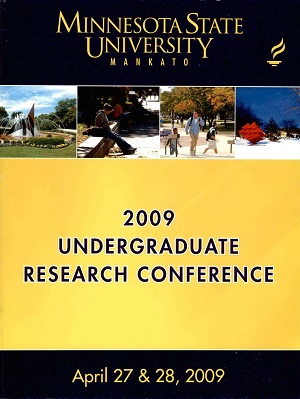Visual Misperceptions Due to Time Constraints
Location
CSU 255
Start Date
28-4-2009 9:00 AM
End Date
28-4-2009 11:00 AM
Student's Major
Psychology
Student's College
Social and Behavioral Sciences
Mentor's Name
Jonathan Page
Mentor's Department
Psychology
Mentor's College
Social and Behavioral Sciences
Description
There are many instances when humans are required to make rapid discriminations. For example, in law enforcement, police make snap judgements in high stress situations, such as whether the object in a suspects hand is a cell phone or a gun. In rare instances, an officer will make an error in judgment and shoot an unarmed suspect. This experiment looks at where this recognition error occurs in the visual processing system. Particpants were shown a series of chromatic and achromatic circles in two timed conditions: fast (800ms) and slow (1600ms). Targets were circles with vertical stripes, standards had horizontal stripes. Participants could respond correctly by either identifying a target as a target (a hit) or a standard as a standard (a correct rejection). The participant scored an error if they identified a target as a standard (a miss) or responded that a standard was a target (a false alarm). Reaction times were recorded for each response. An electroencephalograph (EEG) also measured brain waveforms to identify response recognition patterns. Our results indicated that there was an increase in stimulus discrimination errors when faster judgements are required and that these errors can be seen in early visual processing stages.
Visual Misperceptions Due to Time Constraints
CSU 255
There are many instances when humans are required to make rapid discriminations. For example, in law enforcement, police make snap judgements in high stress situations, such as whether the object in a suspects hand is a cell phone or a gun. In rare instances, an officer will make an error in judgment and shoot an unarmed suspect. This experiment looks at where this recognition error occurs in the visual processing system. Particpants were shown a series of chromatic and achromatic circles in two timed conditions: fast (800ms) and slow (1600ms). Targets were circles with vertical stripes, standards had horizontal stripes. Participants could respond correctly by either identifying a target as a target (a hit) or a standard as a standard (a correct rejection). The participant scored an error if they identified a target as a standard (a miss) or responded that a standard was a target (a false alarm). Reaction times were recorded for each response. An electroencephalograph (EEG) also measured brain waveforms to identify response recognition patterns. Our results indicated that there was an increase in stimulus discrimination errors when faster judgements are required and that these errors can be seen in early visual processing stages.
Recommended Citation
Aldrich, Laura. "Visual Misperceptions Due to Time Constraints." Undergraduate Research Symposium, Mankato, MN, April 28, 2009.
https://cornerstone.lib.mnsu.edu/urs/2009/oral-session-11/4



